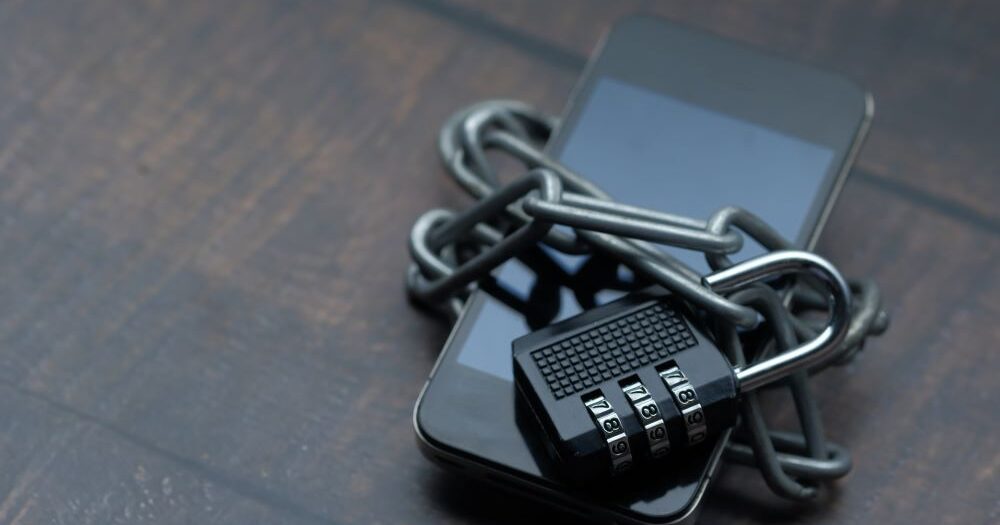Toledo Public Schools (TPS) will require students to store their cell phones in secure pouches or lockboxes during school hours beginning in August 2025, implementing a district-wide cell phone ban policy that affects all students from kindergarten through 12th grade.
Related Article: New York Schools Prepare for Bell-to-Bell Cell Phone Ban Starting This September
The policy responds to Ohio House Bill 250, which mandates that all public school districts adopt formal rules regarding student cell phone use during instructional time. Governor Mike DeWine supported the legislation, citing concerns about how phones disrupt learning and affect student focus.
Policy Implementation Details
Under the new Toledo Public Schools policy, enforcement will vary by grade level and school type, reports WTOL. Students at TPS comprehensive high schools and magnet schools will use Yondr pouches. These magnetic locking devices secure phones upon student arrival and unlock when students leave for the day.
Students in kindergarten through eighth grade will place their devices in secure lockboxes at the start of each school day and retrieve them at dismissal.
District officials stated the policy aims to foster a more focused and engaging learning environment. Additional implementation details and expectations will be shared in the coming weeks.
Ohio’s School Cell Phone Ban Legislative Framework
Ohio House Bill 250 requires each school district to establish policies governing cellular telephone use during school hours. The legislation emphasizes that student cell phone use should be “as limited as possible during school hours” and must reduce phone-related distractions in classroom settings.
The law includes specific exceptions for emergencies, reports 13ABC. Ohio’s legislation suspends the cell phone ban during an active threat or emergency, requiring each public school administrator to establish protocols addressing cell phone use during such incidents.
Additional exceptions allow cell phone use for student learning purposes or to monitor and address health concerns. Schools must permit students to use their phones for health monitoring if they provide a written statement from their doctor.
National Context of School Cell Phone Policies
Toledo Public Schools joins a growing number of districts and states implementing cell phones bans or restrictions in school policies. As of June 2025, 22 states and Washington, D.C., have enacted laws or policies regarding student cell phone usage in K-12 classrooms.
Other states with active laws or executive orders that ban or restrict cell phones in schools include Alabama, Florida, Georgia, Indiana, Iowa, Kentucky, Louisiana, Nebraska, Nevada, New York, North Dakota, Oklahoma, South Carolina, Tennessee, Texas, Utah, Virginia, and West Virginia.
Research Supporting Cell Phone Restrictions
According to Common Sense Media research from 2023, half of students ages 11 to 17 receive at least 237 notifications on their phones daily, with 25% of these notifications occurring during school hours.
The data demonstrates the significant distraction potential of mobile devices during instructional time. Multiple studies indicate that constant notifications and the urge to check devices can severely impact student concentration and academic performance.
Implementation Challenges and Considerations
School districts implementing banned cell phones in schools policies face several operational challenges. Enforcement requires clear protocols, adequate storage solutions, and staff training to ensure consistent application across all grade levels.
Related Article: Instagram Launches New Initiative to Prevent Cyberbullying in Schools
Emergency communication remains a primary concern for parents and administrators. The Ohio legislation addresses this by requiring schools to maintain emergency contact protocols while restricting routine cell phone access during instructional time.
Impact on Student Achievement
Research suggests that cell phone restrictions can positively affect student achievement by reducing classroom distractions and improving focus during instruction. Studies indicate that students in schools with strict cell phone policies demonstrate increased engagement and improved academic outcomes.
The policy may also address concerns about cyberbullying and social media-related disruptions during school hours. By limiting access to social media platforms and messaging apps, schools can create more focused learning environments.
Health and Safety Considerations
The legislation acknowledges legitimate health monitoring needs by allowing exceptions for students with medical conditions requiring device access. This provision ensures that students with diabetes, seizure disorders, or other health conditions can maintain necessary monitoring capabilities.
Emergency communication protocols remain in place, allowing parents to contact students through school administrative offices when necessary. This system maintains safety connections while reducing routine disruptions.
Future Monitoring and Evaluation
Toledo Public Schools will likely monitor the policy’s effectiveness through various metrics, including academic performance indicators, disciplinary incident reports, and feedback from teachers, students, and parents.
The district’s experience with the banned cell phones in schools policy will contribute to ongoing discussions about technology use in educational settings and may inform future policy adjustments based on implementation outcomes.
As Ohio school districts implement similar policies statewide, data collection and analysis will provide insights into the long-term effects of restricting cell phone access during school hours on student achievement, behavior, and overall school climate.







